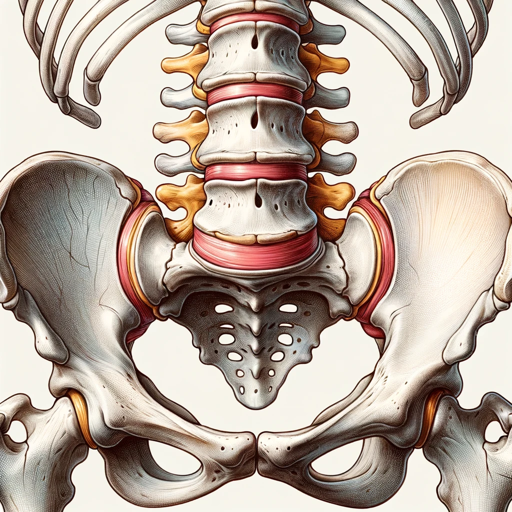Frozen Shoulder (Adhesive Capsulitis)-adhesive capsulitis exercise guide.
AI-powered recovery for frozen shoulder.
What is frozen shoulder? Tell me about range-of-motion exercises for frozen shoulder. Emphasize without pain ROM.
How can I prevent frozen shoulder?
What is the best way to treat frozen shoulder?
What is surgical indication for frozen shoulder?
Related Tools
Load More
Skin Doctor
Friendly Dermatology Expert with a witty touch.

The Physio Assistant
Hospital and Primary Care Physiotherapy Assistant

Physical Therapy
Provides information on physical therapy and exercises.

Functional Medicine Doctor
I'm a virtual Functional Medicine Doctor and healthcare assistant.

Orthopedic Expert
Your go-to AI for comprehensive orthopedic care, occupational health, and tailored nutrition.

Low Back Pain
1. Pain indicate that cells in your back is dead, damaged and weak. 2. Blood circulation and nutrition are crucial to back. 3. Very simple 6 movements to increase blood circulation to back. 4. Spinal adaptation. 5. Redlight stretch by M.D
20.0 / 5 (200 votes)
Introduction to Frozen Shoulder (Adhesive Capsulitis)
Frozen Shoulder, also known as Adhesive Capsulitis, is a condition characterized by stiffness, pain, and limited range of motion in the shoulder joint. This condition occurs when the connective tissue surrounding the shoulder joint thickens and tightens, forming adhesions. It progresses through three stages: the 'freezing' stage where pain increases and mobility decreases, the 'frozen' stage where the shoulder is stiff but the pain may subside, and the 'thawing' stage where range of motion gradually returns. Frozen Shoulder often develops without a clear cause but can be triggered by shoulder immobility, injury, or systemic conditions such as diabetes or hypothyroidism. The design purpose of Frozen Shoulder treatment is to help patients regain mobility through targeted exercises, pain management, and physical therapy. For example, in the 'frozen' stage, patients may benefit from passive range-of-motion exercises, where the arm is moved gently by an external force to prevent further stiffness.

Main Functions of Frozen Shoulder (Adhesive Capsulitis) Services
Range-of-Motion Exercises
Example
A common exercise is the Pendulum Stretch, where the patient leans forward and gently swings the arm in small circles to increase mobility without putting too much strain on the shoulder.
Scenario
A 50-year-old office worker experiencing pain and stiffness in their shoulder after months of limited arm movement due to an injury would use these exercises to gradually regain movement.
Pain Management Techniques
Example
Heat or cold therapy, in combination with over-the-counter pain relievers like NSAIDs, can be used to reduce inflammation and pain before engaging in stretching exercises.
Scenario
A patient going through the 'freezing' stage of Frozen Shoulder might apply heat packs for 20 minutes before their physical therapy session to ease stiffness and prepare the shoulder for movement.
Guidance on Shoulder Health Maintenance
Example
Providing preventive advice, such as the importance of regular shoulder movement and ergonomic adjustments to avoid stress on the joint.
Scenario
An individual recovering from shoulder surgery could receive advice on avoiding future shoulder immobility, such as practicing gentle stretches throughout the day or maintaining proper posture at work to prevent stiffness.
Ideal Users of Frozen Shoulder (Adhesive Capsulitis) Services
Middle-Aged Adults
People between the ages of 40-60 are at the highest risk of developing Frozen Shoulder, particularly those who are recovering from surgery, injury, or have conditions like diabetes. These users benefit from targeted exercises and pain management strategies to restore shoulder mobility.
Post-Surgery Patients
Individuals who have undergone shoulder surgeries, such as rotator cuff repairs, are prone to developing stiffness due to post-operative immobilization. These patients would benefit from rehabilitation programs focused on slowly increasing range of motion to prevent Frozen Shoulder.

Guidelines for Using Frozen Shoulder (Adhesive Capsulitis)
Visit aichatonline.org for a free trial without login, no need for ChatGPT Plus.
Start by accessing the tool from the official website. It offers a free trial without requiring any login, and no need to subscribe to any paid version such as ChatGPT Plus. This ensures ease of access.
Assess your shoulder condition.
Before using the tool, understand your current shoulder mobility and pain level. You might need a doctor's diagnosis for Frozen Shoulder (Adhesive Capsulitis) before beginning treatment or exercises.
Access tailored exercises and guides.
Navigate through the platform to find targeted range-of-motion exercises specifically designed to address frozen shoulder. Follow the instructions to perform these exercises at home, gradually increasing mobility.
Track your progress regularly.
Use the tool to record your shoulder's range of motion improvement over time. Regular tracking ensures that you're staying on course with your recovery and adjusting exercises based on progress.
Consult healthcare professionals when needed.
Although this tool can guide you through various exercises and treatments, it’s important to seek professional medical advice if your symptoms worsen or you need personalized guidance.
Try other advanced and practical GPTs
Strategic Problem Solving Consulting
AI-powered solutions for your toughest problems
Themenübersicht auf aiMOOC.org
AI-powered thematic overviews for learning

Looker Studio Helper
AI-powered assistant for Google Looker Studio

Hellscape: Backworld
AI-powered survival horror adventure.
Story and Keyword Based Article Copywriter by BV
AI-powered articles that rank

News Article Craft
AI-powered content creation made easy

Protocol 1
Push Boundaries with AI-Powered Expertise

Crypto Guru 💎✋
AI-powered insights for crypto investments.

Laptops & Computers Ultimate Shopping Guide
AI-powered guide for perfect laptops.

FaceSwap
AI-Powered Face Swapping Made Easy

AGAPE LOVE
AI-powered biblical guidance for relationships

Meeting Minutes
AI-Powered Meeting Transcriptions Made Easy

- Rehabilitation
- Pain Relief
- Physical Therapy
- Home Exercise
- Mobility Training
Q&A About Frozen Shoulder (Adhesive Capsulitis)
What is Frozen Shoulder (Adhesive Capsulitis) and how can this tool help?
Frozen Shoulder, or Adhesive Capsulitis, is a condition that causes pain and stiffness in the shoulder joint. This tool helps by providing detailed range-of-motion exercises and recovery strategies aimed at gradually increasing shoulder mobility.
What type of exercises does the tool recommend for frozen shoulder?
The tool offers a variety of exercises focused on range-of-motion, such as pendulum swings, wall climbs, and shoulder rotations, specifically designed to reduce stiffness and increase flexibility over time.
Can this tool replace physical therapy for frozen shoulder?
While the tool provides excellent guidance and exercises, it should complement—not replace—professional physical therapy. Always consult with a healthcare provider for severe or persistent symptoms.
Is there a way to track my shoulder’s recovery progress using this tool?
Yes, the tool includes a progress tracking feature that allows users to record their range of motion and pain levels over time, helping you stay on track with your recovery.
Are there any risks in using this tool without professional supervision?
Although the exercises are generally safe, improper form or overexertion could worsen symptoms. Always follow the instructions carefully and consult a medical professional if unsure.